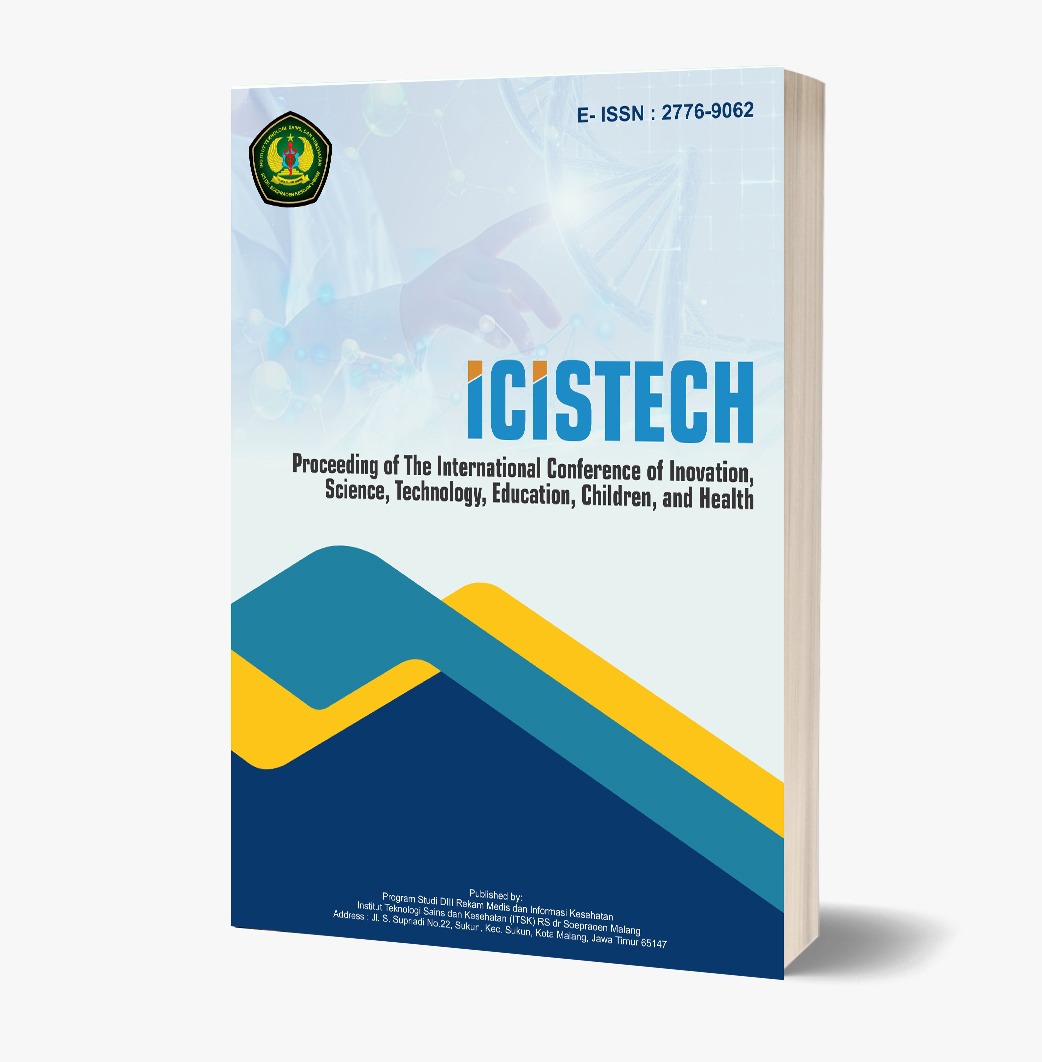Relationship Between Low Birth Weight and Pregnant Women's HB Results
DOI:
https://doi.org/10.62951/icistech.v5i1.241Keywords:
Anemia, Hemoglobin Level, LBW, Motolohu Center, Pregnant WomenAbstract
Low Birth Weight (LBW) is one of the main risk factors that contribute to neonatal morbidity and mortality. One of the factors that can affect the incidence of LBW is the hemoglobin (Hb) level of pregnant women. Pregnant women with low Hb levels (anemia) have a higher risk of giving birth to low birth weight babies. This study was conducted to analyze the relationship between Hb levels of pregnant women and the incidence of LBW at the Motolohu Health Center, Rancangan District, Pohuwato Regency, Gorontalo Province. This study aims to determine the relationship between Hb levels of pregnant women and the incidence of LBW at Motolohu Health Center. This study used a quantitative method with a cross-sectional study design. The sample in this study amounted to 30 respondents selected using purposive sampling techniques. Data were collected through medical records and structured interviews. Data analysis was performed using the Chi-Square statistical test with a significance level of 0.05. The results of the analysis showed that there was a significant relationship between maternal Hb levels and the incidence of LBW, with a p-value of 0.000 (p ≤ 0.05). This indicates that pregnant women with low Hb levels are at higher risk of giving birth to low birth weight babies compared to mothers with normal Hb levels. There is a significant relationship between maternal Hb levels and the incidence of LBW. Low Hb levels in pregnant women can increase the risk of delivery with low birth weight, so more attention is needed to nutritional intake and iron supplementation during pregnancy.
References
Black, R. E., Victora, C. G., Walker, S. P., Bhutta, Z. A., Christian, P., De Onis, M., ... & Uauy, R. (2019). Maternal and child undernutrition and overweight in low-income and middle-income countries. The Lancet, 382(9890), 427-451. https://doi.org/10.1016/S0140-6736(13)60937-X
Dandara, S., Hariati, L., & Teguh, A. R. (2016). Analysis of risk factors for LBW, infant body length at birth, and basic immunization on the incidence of stunting in toddlers aged 12-36 months. Indonesian Journal of Clinical Nutrition, 13(2), 85-92.
Lestari, D. A., & Suryani, E. (2021). Socioeconomic factors and nutritional status of pregnant women on the incidence of LBW in District X. Journal of Nutrition and Public Health, 8(2), 123-130.
Margareth, R. M. H. (2010). The relationship between hemoglobin levels of pregnant women and head circumference of newborns at H. Adam Malik General Hospital, Medan. Indonesian Journal of Clinical Nutrition, 7(1), 1-8.
Ministry of Health of the Republic of Indonesia. (2021). National guidelines for the prevention and management of anemia in pregnant women. Jakarta: Ministry of Health of the Republic of Indonesia.
Notoadmojo, S. (2018). Research methods. Jakarta: Rineka Cipta.
Putri, D. A., & Handayani, S. (2023). The relationship between compliance of pregnant women in consuming iron tablets and the incidence of anemia and LBW. Journal of Public Health, 19(1), 45-52.
Rahmawati, S., & Sari, D. (2022). Maternal diet and anemia with the incidence of low birth weight (LBW). Indonesian Journal of Clinical Nutrition, 19(1), 1-8. https://jurnal.ugm.ac.id
Saragih, B., & Suryani, E. (2013). Micronutrient fortified food in pregnant women affects infant motor development. Indonesian Journal of Clinical Nutrition, 10(2), 85-92. https://jurnal.ugm.ac.id
Saragih, B., & Suryani, E. (2013). Micronutrient fortified food in pregnant women affects infant motor development. Indonesian Journal of Clinical Nutrition, 10(2), 85-92. https://jurnal.ugm.ac.id
Saragih, B., & Suryani, E. (2014). Iron intake, hepcidin levels, and hemoglobin levels in pregnant women. Indonesian Journal of Clinical Nutrition, 11(2), 85-92. https://jurnal.ugm.ac.id
Saragih, B., & Suryani, E. (2015). 1355 G/C as a risk factor for iron deficiency anemia in pregnant women. Indonesian Journal of Clinical Nutrition, 12(2), 85-92. https://jurnal.ugm.ac.id
Saragih, B., & Suryani, E. (2015). The effect of providing additional food (PMT) to pregnant women on the birth weight of babies. Indonesian Journal of Clinical Nutrition, 12(1), 1-8. https://jurnal.ugm.ac.id
Saragih, B., & Suryani, E. (2023). Knowledge, attitudes, behavior, and nutritional intake based on the nutritional status of pregnant women. Indonesian Journal of Clinical Nutrition, 20(1), 1-8. https://jurnal.ugm.ac.id
World Health Organization (WHO). (2018). Anemia in pregnant women.
Wulandari, S., & Sari, D. (2020). The relationship between the nutritional status of pregnant women and the incidence of LBW at the Yogyakarta Health Center. Indonesian Journal of Clinical Nutrition, 17(3), 145-152.
Downloads
Published
How to Cite
Issue
Section
License
Copyright (c) 2025 Proceeding of The International Conference of Inovation, Science, Technology, Education, Children, and Health

This work is licensed under a Creative Commons Attribution-ShareAlike 4.0 International License.













